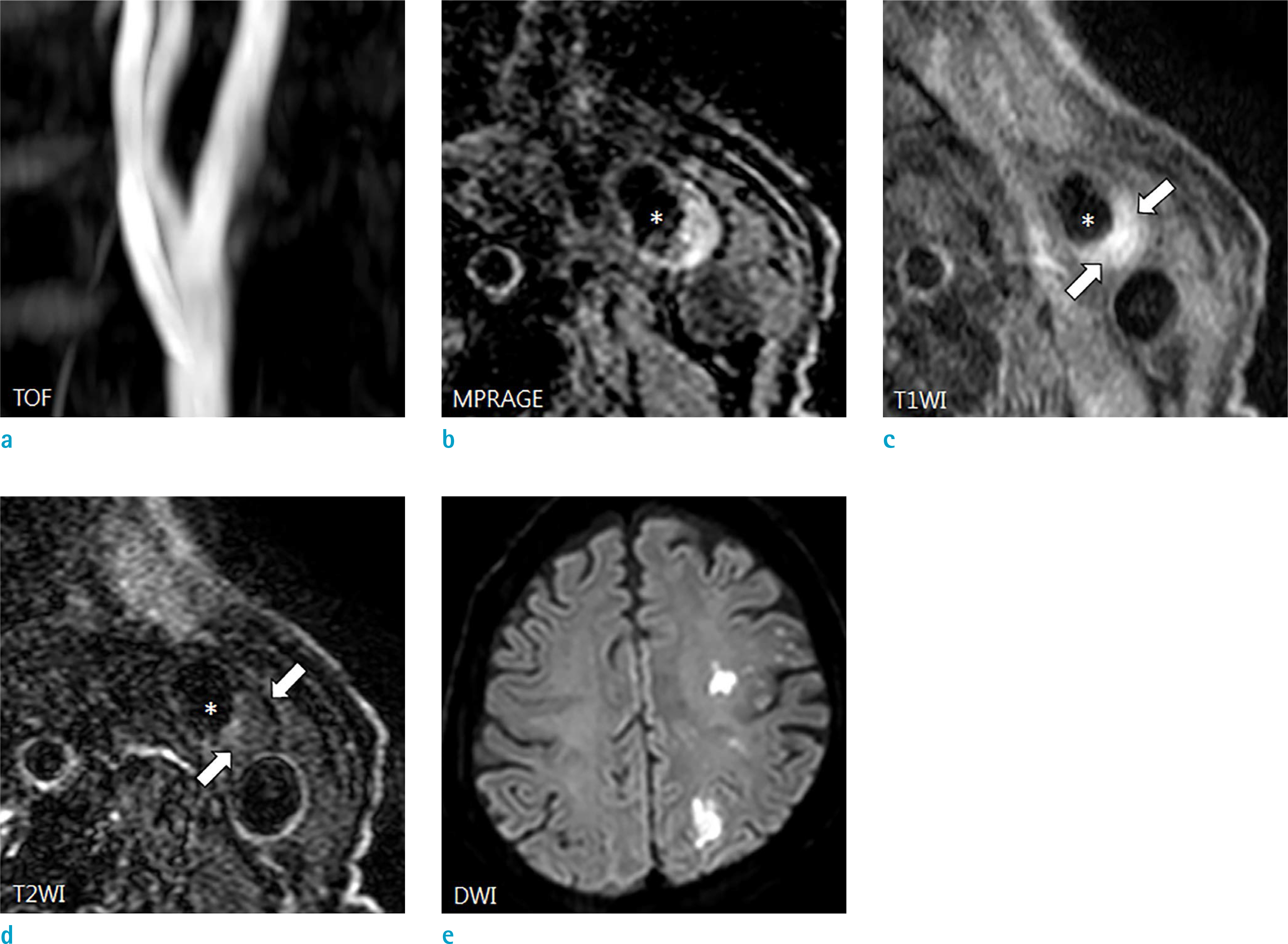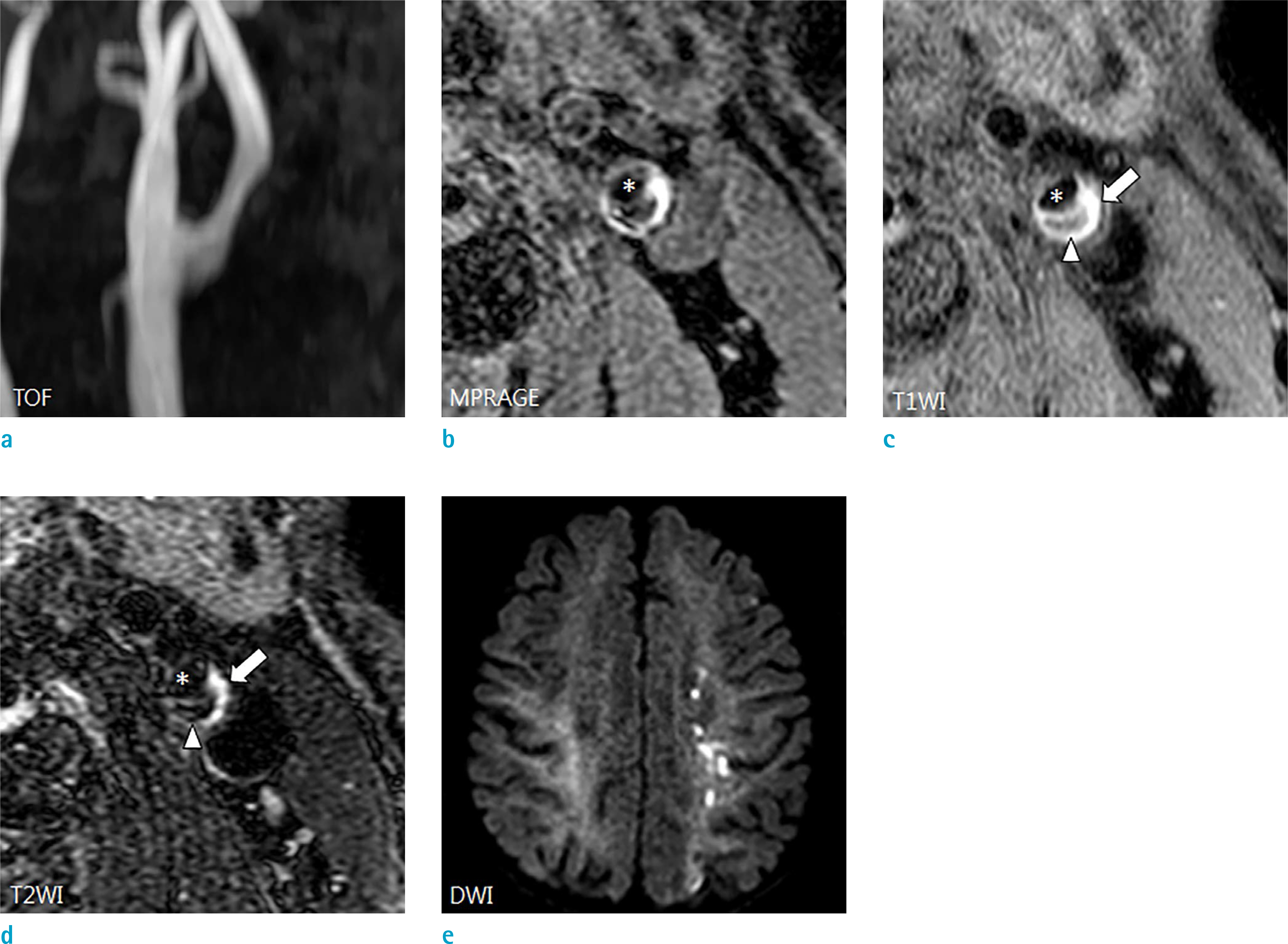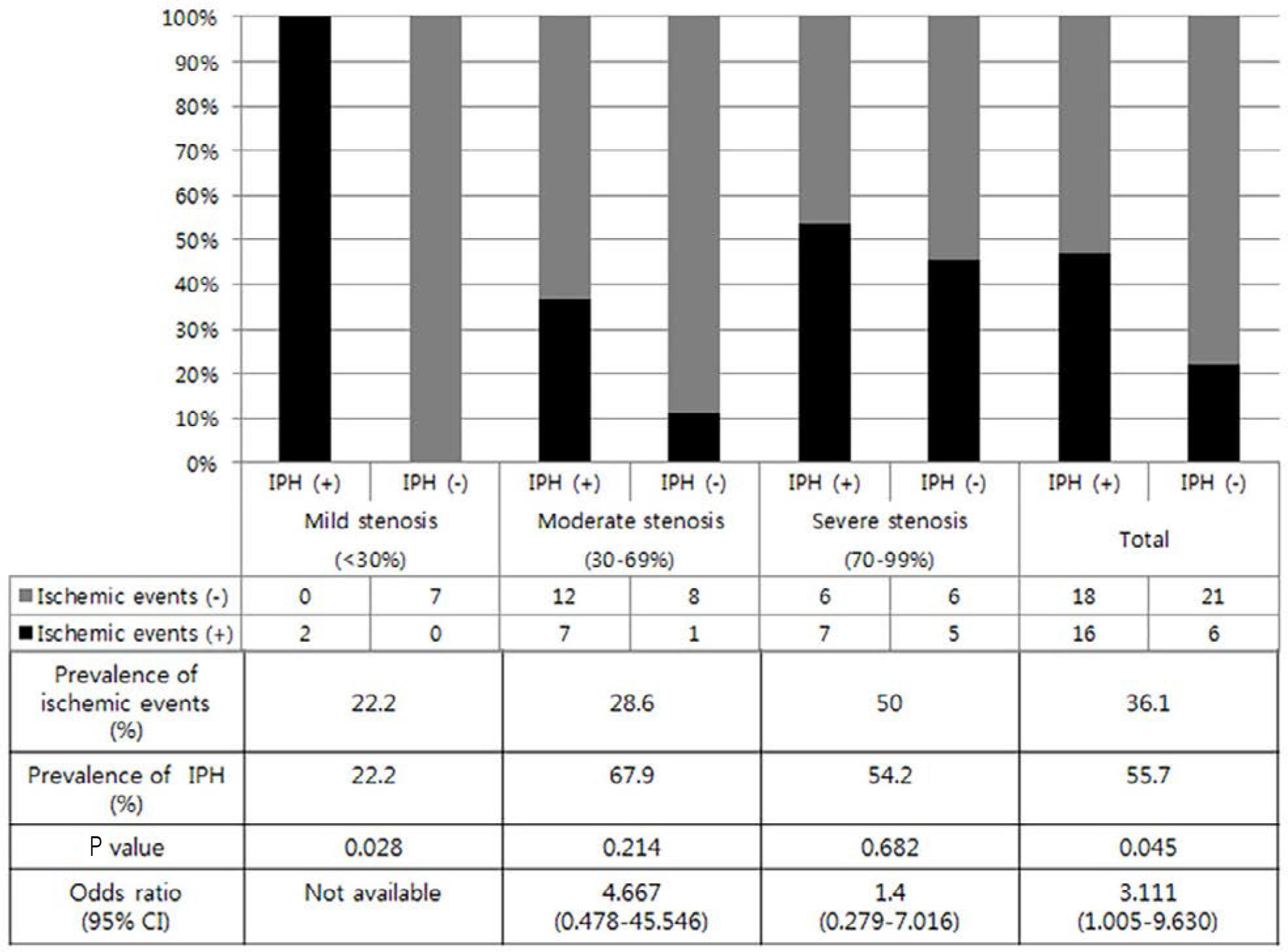Investig Magn Reson Imaging.
2017 Dec;21(4):242-251. 10.13104/imri.2017.21.4.242.
Carotid Intraplaque Hemorrhage is Associated with Acute Cerebral Ischemic Events and Progression of Stenosis on Magnetic Resonance Imaging
- Affiliations
-
- 1Department of Radiology, Wonkwang University Hospital, Iksan, Korea. medicalq@hanmail.net
- KMID: 2400378
- DOI: http://doi.org/10.13104/imri.2017.21.4.242
Abstract
- PURPOSE
To investigate the association of carotid intraplaque hemorrhage (IPH) with acute cerebral ischemic events and progression of stenosis using magnetic resonance (MR) imaging.
MATERIALS AND METHODS
From April 2014 to December 2016, 53 patients underwent carotid plaque MR imaging, including magnetization-prepared rapid acquisition with gradient-echo (MPRAGE) sequence. A total of 66 carotid arteries in 53 patients had carotid stenosis, and they were included in this study. Carotid arteries were classified according to the presence of IPH, the age of hemorrhage, and degree of stenosis. We assessed ipsilateral cerebrovascular event rates and progression of stenosis between the IPH and no-IPH groups.
RESULTS
Of the 61 carotid arteries assessed, 34 (56%) had IPH, and 27 (44%) had no IPH. Acute cerebral ischemic events were more frequent in the IPH group (47% vs. 22%, P = 0.045), especially in the < 30%-stenosis group (100% vs. 0%, P = 0.028). However, there was no significant difference in the incidence of ischemic events according to the age of hemorrhage (50% vs. 44%, P = 0.492). Among the 61 carotid arteries, 20 carotid arteries had previously undergone carotid artery imaging and were evaluated for plaque progression. The trend for progression of stenosis favored the IPH group versus the no-IPH group, with a marginal P-value (20% ± 12.7 vs. 9.6% ± 5.7, P = 0.063).
CONCLUSION
IPH was associated with an increased incidence of acute ischemic events, especially in the mild-stenosis group and it was also associated with progression of stenosis. Evaluation of the carotid IPH by carotid plaque MR could improve discrimination of carotid plaques that cause ischemic events and progression of stenosis.
MeSH Terms
Figure
Reference
-
References
1. Go AS, Mozaffarian D, Roger VL, et al. Heart disease and stroke statistics–2014 update: a report from the American Heart Association. Circulation. 2014; 129:e28–e292.2. Kwee RM, van Oostenbrugge RJ, Mess WH, et al. MRI of carotid atherosclerosis to identify TIA and stroke patients who are at risk of a recurrence. J Magn Reson Imaging. 2013; 37:1189–1194.
Article3. Naylor AR, Schroeder TV, Sillesen H. Clinical and imaging features associated with an increased risk of late stroke in patients with asymptomatic carotid disease. Eur J Vasc Endovasc Surg. 2014; 48:633–640.
Article4. Naghavi M, Libby P, Falk E, et al. From vulnerable plaque to vulnerable patient: a call for new definitions and risk assessment strategies: Part I. Circulation. 2003; 108:1664–1672.
- Full Text Links
- Actions
-
Cited
- CITED
-
- Close
- Share
- Similar articles
-
- Usefulness of Plaque Magnetic Resonance Imaging in Identifying High-Risk Carotid Plaques Irrespective of the Degree of Stenosis
- The role of intraplaque neovascularization in recent and future ischemic stroke in patients with mild carotid stenosis
- Diagnosis and treatment of adult Moyamoya disease
- High-resolution MR Imaging of Carotid Atherosclerotic Plaques
- Contralateral Cerebral Infarction after Stent Placement in Carotid Artery : An Unexpected Complication






